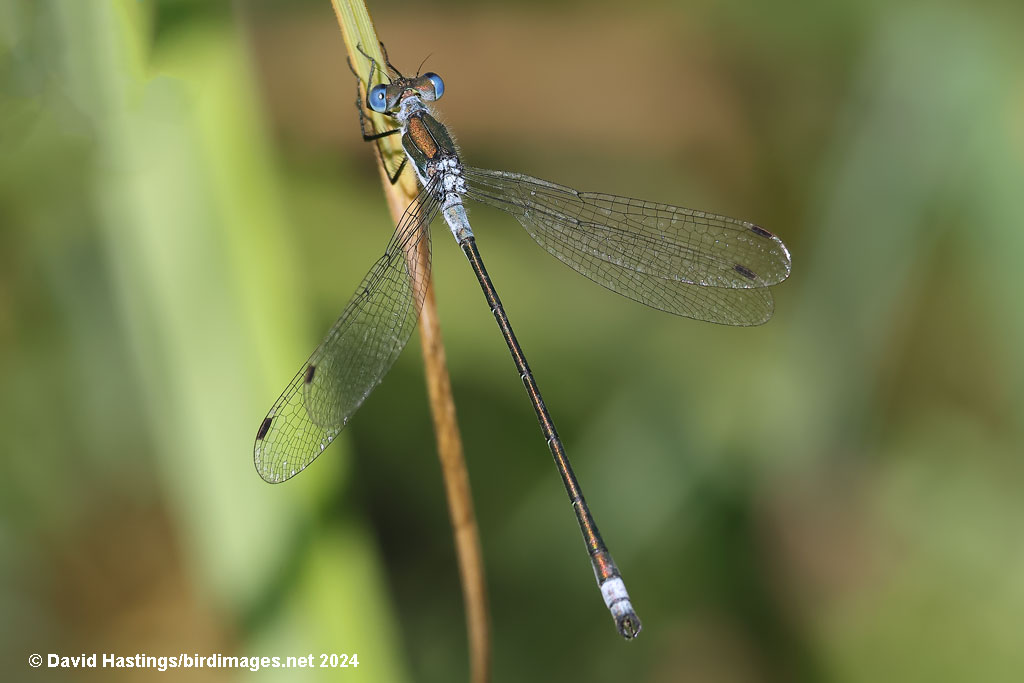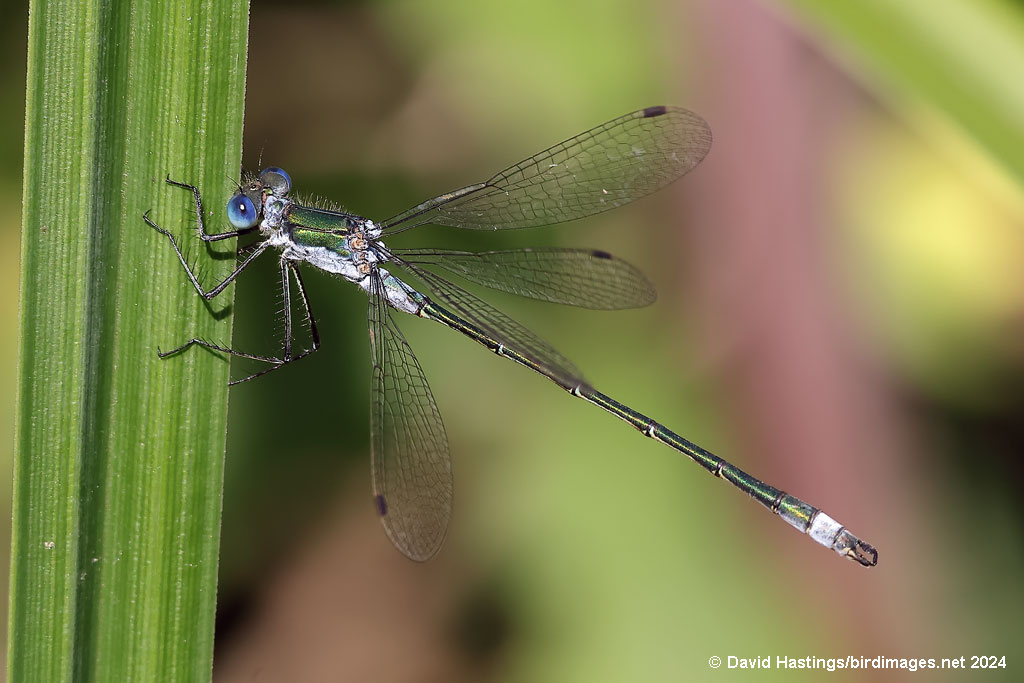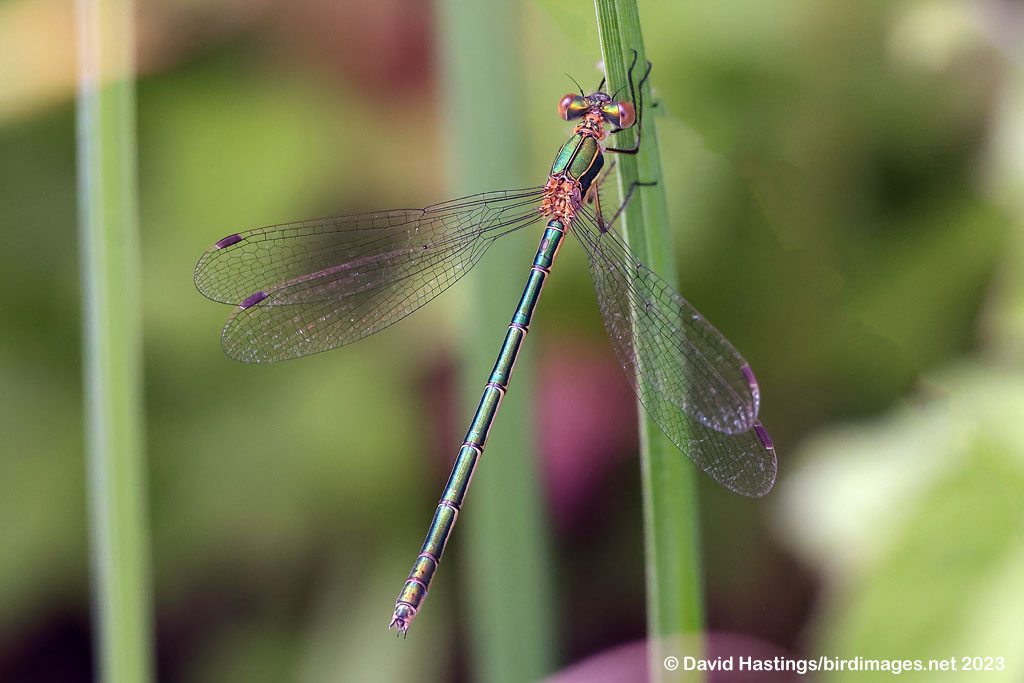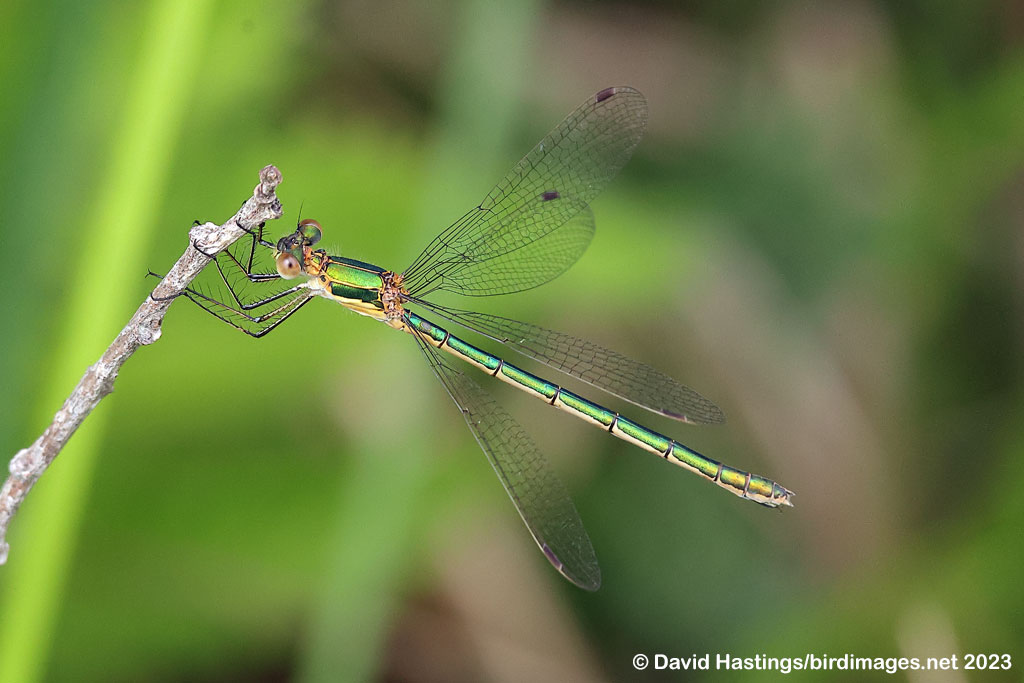 Common Spreadwing (Lestes sponsa). Male. Taken at Whitecross Green Wood, Oxon., on July 29th 2024. Male. Taken at Whitecross Green Wood, Oxon., on July 29th 2024. (© David Hastings) (1/800th sec at f11. Click image for larger version)  Common Spreadwing (Lestes sponsa). Male side view. Taken at Whitecross Green Wood, Oxon., on July 29th 2024. Male side view. Taken at Whitecross Green Wood, Oxon., on July 29th 2024. (© David Hastings) (1/800th sec at f11. Click image for larger version)  Common Spreadwing (Lestes sponsa). Female. Taken at Radley Lakes, Oxon on June 23rd 2023. Female. Taken at Radley Lakes, Oxon on June 23rd 2023. (© David Hastings) (1/640th sec at f11. Click image for larger version)  Common Spreadwing (Lestes sponsa). Female side view. Taken at Radley Lakes, Oxon., on June 23rd 2023. Female side view. Taken at Radley Lakes, Oxon., on June 23rd 2023. (© David Hastings) (1/640th sec at f13. Click image for larger version)  Common Spreadwing. Mating wheel. Taken at Whitecross Green Wood, Oxon., on July 29th 2024. Mating wheel. Taken at Whitecross Green Wood, Oxon., on July 29th 2024. (© David Hastings) (1/800th sec at f13. Click image for larger version) Description Wingspan: 34 - 48 mm; Body length: 35 - 39 mm Also known as the Common Emerald Damselfly, this is the commonest Lestes species in Britain. The male generally has a metallic green body and a blue 'tail-light', and pruinosity covers the whole of S2. The pterostigma are dark. Females have more chunky bodies which are all-green, and two triangular black spots on S1. It is found throughout the British Isles. It favours almost any standing water with luxuriant vegetation, such as tall grasses, rushes and sedges. Sites range from acidic bog pools to brackish ditches. Eggs are laid in the stems of emergent plants. They do not hatch until the following spring. The larvae prey more on crustaceans than other damselflies. Development is rapid and most emerge after only 2 or 3 months' growth. The flight season is mid-May to mid-October, peaking in August. Common Spreadwings fly very slowly and can be remarkably inconspicuous. This species is widespread and fairly common. Earliest UK sighting: 17th June ; Latest UK sighting: 8th September Sightings | 16-Jul-2025 | : | Mortimer, Berks | (1) | | 25-Jun-2025 | : | Whitecross Green Wood, Oxon | (1) |
| | 29-Jul-2024 | : | Whitecross Green Wood, Oxon | (20) | | 04-Jul-2024 | : | Whitecross Green Wood, Oxon | (7) | | 24-Jun-2024 | : | Whitecross Green Wood, Oxon | (4) |
| | 25-Jul-2023 | : | Whitecross Green Wood, Oxon | (2m,1f) | | 17-Jul-2023 | : | Whitecross Green Wood, Oxon | (6m,2f) | | 26-Jun-2023 | : | Whitecross Green Wood, Oxon | (1) | | 23-Jun-2023 | : | Radley Lakes, Oxon | (3) |
| | 31-Aug-2022 | : | Otmoor, Oxon | (1m) | | 15-Aug-2022 | : | Whitecross Green Wood, Oxon | (2m) | | 22-Jul-2022 | : | Radley Lakes, Oxon | (2f) |
| | 05-Sep-2021 | : | Otmoor, Oxon | (1) | | 21-Jul-2021 | : | Banbury, Oxon | (1) |
| | 18-Aug-2020 | : | Radley Lakes, Oxon | (1f) | | 17-Jul-2020 | : | Banbury, Oxon | (2) | | 12-Jul-2020 | : | Banbury, Oxon | (1m,1f) | | 20-Jun-2020 | : | Radley Lakes, Oxon | (3) |
| | 11-Jul-2019 | : | Radley Lakes, Oxon | (5) |
| | 05-Aug-2018 | : | Radley Lakes, Oxon | (2m,1f) | | 31-Jul-2018 | : | Otmoor, Oxon | (1) | | 17-Jul-2018 | : | Radley Lakes, Oxon | (2m,1f) | | 18-Jun-2018 | : | Otmoor, Oxon | (1) |
| | 03-Aug-2017 | : | Otmoor, Oxon | (1m) |
| | 09-Aug-2014 | : | Sole Common Pond, Berks | (2) | | 03-Aug-2014 | : | Otmoor, Oxon | (1) | | 29-Jun-2014 | : | Crowle Moor, N. Lincs | (5) |
| | 10-Aug-2013 | : | Otmoor, Oxon | (1m) |
| | 08-Sep-2012 | : | Otmoor, Oxon | (2m) | | 26-Aug-2012 | : | Greenham Common, Berks | (4m,1f) | | 19-Aug-2012 | : | Otmoor, Oxon | (15m,1f) | | 10-Aug-2012 | : | Otmoor, Oxon | (2m) | | 03-Aug-2012 | : | Otmoor, Oxon | (2m,3f) | | 26-Jul-2012 | : | Otmoor, Oxon | (10+) | | 01-Jul-2012 | : | Otmoor, Oxon | (3m) | | 23-Jun-2012 | : | Otmoor, Oxon | (10 ten) | | 17-Jun-2012 | : | Otmoor, Oxon | (3 ten) |
| | 02-Jul-2011 | : | Otmoor, Oxon | (7) |
| | 15-Aug-2010 | : | Otmoor, Oxon | | | 04-Jul-2010 | : | Otmoor, Oxon | | | 27-Jun-2010 | : | Pinail, Vienne, France | | | 25-Jun-2010 | : | The Brenne, Loire Valley, France | | | 24-Jun-2010 | : | The Brenne, Loire Valley, France | |
| | 22-Aug-2009 | : | Otmoor, Oxon | | | 05-Jul-2009 | : | Otmoor, Oxon | |
| |





